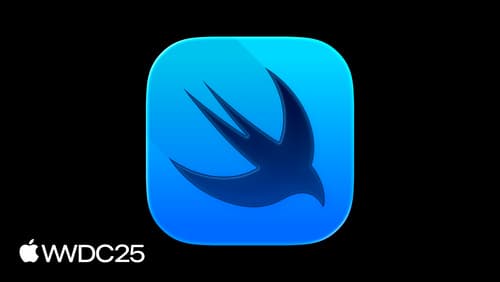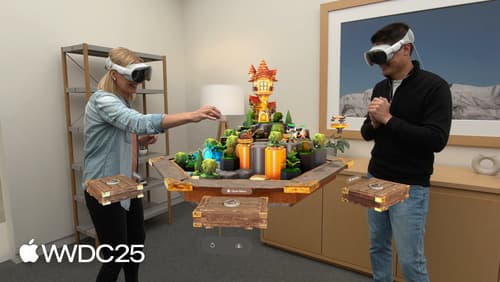What are the new coordinate conversions in SwiftUI and RealityKit
Asked on 2025-06-11
1 search
In the recent WWDC sessions, Apple introduced new coordinate conversion capabilities in SwiftUI and RealityKit, which significantly enhance the integration between these frameworks.
-
Unified Coordinate Conversion API: This API simplifies the process of moving views and entities between different scenes, even across SwiftUI, RealityKit, and ARKit coordinate spaces. This makes content positioning more straightforward when building applications that involve these frameworks (What’s new in visionOS 26).
-
Coordinate Space 3D Protocol: This protocol allows for easy conversion of values between any two types that conform to the coordinate space 3D, even if they are from different frameworks. RealityKit's entity and scene types conform to this protocol, and on the SwiftUI side,
geometryProxy3Dhas a new function to provide its coordinate space. This facilitates the conversion of view positions to points in entity space, taking into account details like points-to-meter conversion and axis direction (Better together: SwiftUI and RealityKit).
These enhancements make it easier to integrate and synchronize 3D content and interactions between SwiftUI and RealityKit, providing a more seamless development experience for creating spatial applications.

What’s new in SwiftUI
Learn what’s new in SwiftUI to build great apps for any Apple platform. We’ll explore how to give your app a brand new look and feel with Liquid Glass. Discover how to boost performance with framework enhancements and new instruments, and integrate advanced capabilities like web content and rich text editing. We’ll also show you how SwiftUI is expanding to more places, including laying out views in three dimensions.

What’s new in visionOS 26
Explore exciting new features in visionOS 26. Discover enhanced volumetric APIs and learn how you can combine the power of SwiftUI, RealityKit and ARKit. Find out how you can build more engaging apps and games using faster hand tracking and input from spatial accessories. Get a sneak peek at updates to SharePlay, Compositor Services, immersive media, spatial web, Enterprise APIs, and much more.

Better together: SwiftUI and RealityKit
Discover how to seamlessly blend SwiftUI and RealityKit in visionOS 26. We’ll explore enhancements to Model3D, including animation and ConfigurationCatalog support, and demonstrate smooth transitions to RealityView. You’ll learn how to leverage SwiftUI animations to drive RealityKit component changes, implement interactive manipulation, use new SwiftUI components for richer interactions, and observe RealityKit changes from your SwiftUI code. We’ll also cover how to use unified coordinate conversion for cross-framework coordinate transformations.
